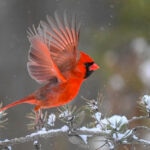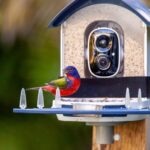Backyard Beekeeping: How to Care for Your Bees

Photo by Alex Potemkin/E+
If you want to keep your own bees, you’re probably wondering how to get started.
Here’s everything you need to know about getting ready to set up your own hive. Follow these steps and you’ll have honey in no time.
Key Takeaways
- Check local zoning laws, learn beekeeping basics, and seek classes, clubs, and mentors before starting a hive.
- A hive requires specific equipment, protective gear, and proper placement with access to nectar, water, sun, and wind protection.
- Colonies need routine inspections every one to two weeks to monitor queen health, food supply, and honey production.
- Beekeepers should recognize the signs of bee illness and look out for mite infestations.
Getting Started With Backyard Beekeeping
First things first: Check your local zoning codes. Amy Franklin, DVM, founder of Farms for Orphans, says some areas require permits or limit the number of hives you can keep.
When the legal stuff is squared away, you’ll want to understand beekeeping basics, like common lingo.
When beekeepers talk about their “setup,” they’re referring to hives and colonies—and there’s a difference. “A ‘hive’ is the physical box set up with the ‘colony’ of bees inside,” says Katherine Lesko, DVM, owner of Northern Michigan Honeybee Veterinary Services. “The colony consists of a queen, nurse and worker bees, drones, and larvae laid by the queen.”
Dr. Lesko notes that each colony needs one healthy queen—what beekeepers call “queenright.”
The queen is “essentially the mother of all the bees in the colony,” says Joc Rawls, DVM, owner of Rawls Veterinary, PC, and Bridle Path Beeyard in Phoenix.
You can purchase a bee package or nucleus colony (often called a “nuc”), which is like a starter kit for beekeepers that includes a queen, adult bees, and even honey.
For the best results, Dr. Franklin recommends buying bees from a reputable, local source. These bees have already acclimated to your environment and won’t have to go through the stress of long-distance shipping, which can weaken their immunity.
But do your research before rushing into anything. Dr. Franklin warns that many first-time beekeepers jump in without understanding what successful beekeeping requires.
Before making your purchase, she recommends:
- Taking a beekeeping class
- Joining a local bee club
- Visiting an apiary to work with hives and make sure this hobby is right for you
- Finding a long-term beekeeping mentor
How To Care for Your Bees
Once you’ve researched the different types of bees and chosen your favorite, it’s time to set them (and yourself) up for success.
Essential Equipment
Beekeeping has many benefits, but it also comes with a hefty shopping list. Here’s a quick look at what Dr. Lesko and Dr. Franklin recommend:
- Hive setup: Hive stand, bottom board, hive boxes, removable frames, inner cover, and telescoping outer cover
- Beekeeping tools: J hook, L hook, smoker, fuel, in-hive feeder, and beehive brush
- Protective gear: Bee suit and jacket, veil, and gloves
- Monitoring supplies: Mite sampling materials, notebook or app for recordkeeping
Ideal Location Setup
There’s a lot more to hive placement than you might realize. Consider these factors:
- Dependable nectar and pollen sources within a 2-mile radius
- Year-round water source
- Northern windbreak for winter protection
- Upper side of a slope for proper air drainage
- Sunny area with minimal shade
- Hive entrance that ideally faces somewhere between the south and east
Keep in mind that the ideal hive location can vary depending on where you live. Dr. Rawls, who’s had a backyard apiary for 10 years in Arizona, places his colonies on the east side of his house “to take advantage of the afternoon shading from the intense desert sunlight.”
He recommends consulting with local beekeeping experts to determine the best spot in your yard.
Regular Maintenance
“The upkeep of colonies requires routine inspections every seven to 14 days during spring, summer, and fall,” Dr. Rawls explains. Think of these as wellness checkups—you’ll be looking for everything from adequate food supply to signs of illness.
During these inspections, Dr. Lesko recommends asking these questions:
- Do I see the queen?
- How many bees are present in the hive today?
- Are the larvae and eggs in healthy condition?
- Do I smell anything off-putting or unusual?
- Is honey production adequate?
What To Do If You Get Stung
If you get stung, Dr. Franklin says to remove the stinger immediately and wash the area with soap and water.
“Over-the-counter pain relievers and antihistamines can be helpful. An ice pack or cold compress can be applied to reduce swelling and pain,” she says.
Get medical attention if you have difficulty breathing, dizziness, or swelling beyond the sting site. Dr. Franklin also recommends keeping an EpiPen on hand, but cautions that this is not for routine bee stings, only anaphylactic reactions.
If a cat, dog, or other animal is stung, Dr. Lesko suggests consulting your veterinarian for advice.
You can reduce your bee sting risk by following these tips:
- Work slowly and confidently around the bees
- Don’t keep a beehive open longer than necessary
- Avoid strong perfumes and deodorants
- Wear only light-colored clothing
What To Do If Your Bees Get Sick
Spotting sick bees early can save your colony. Dr. Franklin suggests watching for the following warning signs:
- Increased aggression
- Fewer bees coming and going from the hive
- Dead bees in front of the hive
- Disoriented or crawling bees
- Off-putting odors
- Adult bees that appear smaller or have deformed wings
“The most common health issue I see is a Varroa mite infestation,” Dr. Lesko adds.
These tiny parasites cause viral infections that can devastate colonies, and Dr. Rawls warns that symptoms may not be obvious until you start noticing “many weakened bees crawling in front of the hive and an obvious drop in the worker population.”
Keep an eye on any changes in bee behavior and contact a bee-savvy veterinarian immediately if you suspect illness.
FAQs About Backyard Beekeeping
Can you sell honey from backyard beekeeping?
Yes, but regulations vary by state. Research your local requirements before selling your honey.
Do beekeepers still get stung?
Yes, occasional stings can be part of the job, even if you wear protective gear. However, proper techniques, protective equipment, and working with gentle bee types can minimize your risk.



